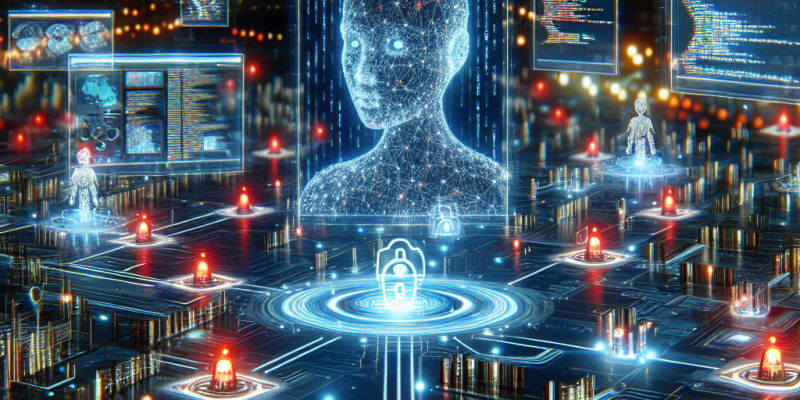AI and Automation: Revolutionizing Network Security Solutions by 2025

In recent years, we have witnessed rapid advancements in technology, particularly in the fields of artificial intelligence (AI) and automation. By 2025, these innovations are set to dramatically change the way we approach network security. As cyber threats become more complex and sophisticated, integrating AI and automation into security solutions is no longer optional; it is essential.
Understanding the Current Landscape
As of 2025, organizations face an increasing number of cybersecurity threats. These include ransomware attacks, data breaches, and phishing scams. Traditional security measures struggle to keep up with these evolving risks. This is where AI and automation come in.
AI technologies can analyze vast amounts of data quickly, spotting patterns that human eyes might miss. Automated systems can respond to potential threats in real time, providing a level of protection that was previously unattainable.
AI-Driven Threat Detection
One of the most significant roles of AI in network security is threat detection. Machine learning algorithms can learn from past incidents to identify potential vulnerabilities in an organization’s systems. By analyzing network traffic and user behavior, AI can flag unusual activity that may indicate a cyber attack.
For instance, instead of waiting for a human analyst to notice suspicious behavior, AI can instantly alert IT teams about potential threats. As a result, organizations can respond to incidents much faster, minimizing the damage caused by cyber attacks.
Automating Response Strategies
In 2025, automation will play a crucial role in responding to security threats. Automated security systems can carry out predefined actions when they detect a potential threat. This could include isolating affected systems, blocking specific IP addresses, or even applying patches to vulnerable software without human intervention.
By automating these response strategies, organizations can reduce the time it takes to respond to threats, effectively lowering the risk of data loss and damage.
Predictive Analytics
Another exciting development is the use of predictive analytics powered by AI. These systems can analyze historical data to predict potential future threats. By identifying trends and patterns, they can provide organizations with insights into where threats may emerge next.
This proactive approach is essential for modern network security. Instead of merely reacting to attacks, organizations can stay one step ahead by preparing for possible future risks.
Enhancing User Awareness
AI can also help improve user awareness of cybersecurity best practices. For example, intelligent training programs can analyze users’ behavior and provide personalized recommendations on how to improve their security habits.
By understanding common risk factors and tailoring education, organizations can create a more security-conscious workforce, which is critical in reducing human error—one of the leading causes of security breaches.
Challenges Ahead
While the benefits of AI and automation are clear, there are challenges to consider. Ensuring the privacy of data and maintaining compliance with regulations are ongoing concerns. Additionally, the reliance on AI requires constant updates and monitoring to ensure systems remain effective against emerging threats.
Organizations must also be cautious about potential vulnerabilities within AI systems themselves, as bad actors may exploit weaknesses in automated security processes.
Conclusion
By 2025, the integration of AI and automation will undoubtedly revolutionize network security solutions. With improved threat detection, automated response strategies, and enhanced user awareness, organizations will be better equipped to combat cyber threats.
To stay safe in this ever-evolving digital landscape, businesses must embrace these technologies while remaining vigilant about the challenges they present. The future of network security is bright, and with the right strategies in place, organizations can protect themselves against even the most sophisticated cyber threats.














